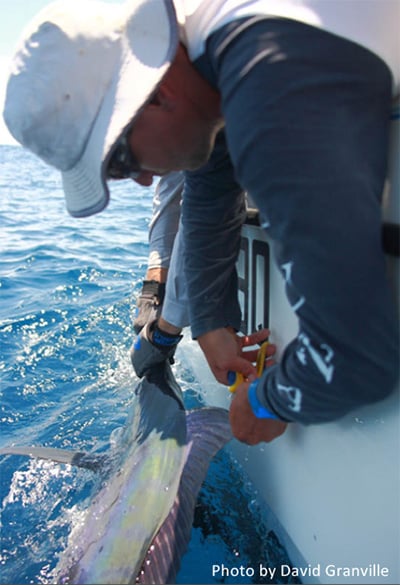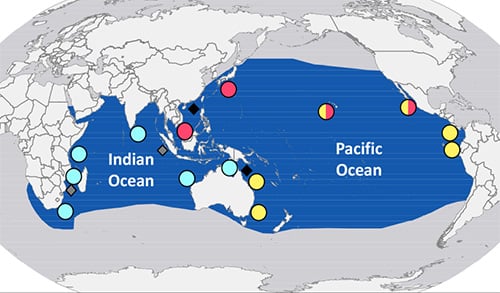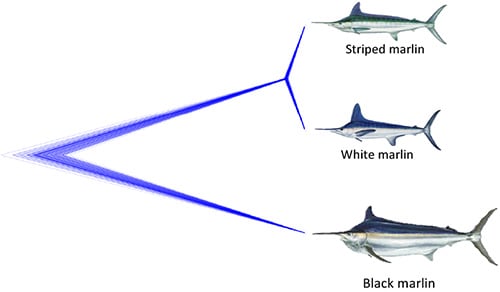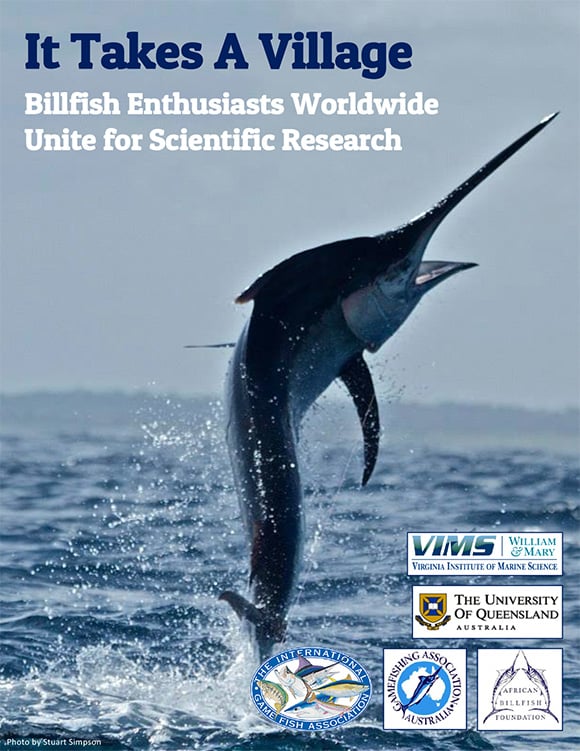New Research Sheds Light on Black, Striped and White Marlin Population Structure
This brochure illustrates how the recreational fishing sector can participate in citizen science to fill in the data gaps that exist for the species that we love to fish for.
Understanding billfish population structure is critical for effective fisheries management. Management plans that focus on distinct populations may be more effective than plans predicated on a single species stock. However, until recently, limited information existed on the number of and geographic size of populations for several species of billfish. Recent research by Dr. Nadya Mamoozadeh of the Virginia Institute of Marine Science and Dr. Sam Williams of the University of Queensland conducted research utilizing new genetic methods to explore white, black and striped marlin population structure to provide the necessary information for conserving and managing billfish.

Collecting black marlin fin clips
for genetic analysis.
To accomplish their work, they relied on recreational anglers and angling organizations like the International Game Fish Association, African Billfish Foundation and the Game Fishing Association of Australia to obtain billfish tissue samples from across the Atlantic, Pacific and Indian Oceans. The end result was a global sampling network that spanned 29 countries and five continents.



Map showing spatial distribution of black marlin (blue) and sampling locations of fish analyzed in this study (circles). Sampling locations are colored to show the locations of three genetically distinct populations. ♦ = previously confirmed spawning location, ♦ = possible additional spawning location.
Map showing spatial distribution of striped marlin (blue) and sampling locations of fish analyzed in this study (circles). Sampling locations are colored to show the locations of five genetically distinct populations.
Species relationships for striped marlin and white marlin, using black marlin as a reference. Striped marlin and white marlin are shown as belonging to two genetically distinct lineages.
As noted by Drs. Mamoozadeh and Williams, this is an excellent example of how recreational can participate in citizen science to fill in the data gaps that exist for the species that we love to fish for. The IGFA is indebted to the many members, staff, fishing clubs, Representatives and Trustees that helped these researchers accomplish this important body of work including the following:
Anton, Jose
Balboa Angling Club
Baumeier, Eduardo
Booysen, Jonathan
Bruynzeel, Josh
Burston, Roger
Cook, Talish
De Genna, Mario
Gates, Jenny
Gates, Matt
Hansen, Trevor
Hemingway, Mark
Hidalgo, Xavier
Higashi, Tomonori 'Tomo'
Hill, Nick
Hodgson, Kevin
Holdsworth, John
Jones, Evan
Kirby, Michael
Kramer, Rob
Kurz, Bob
Lawler, Eddy
Lefranc, Ricky
Martinez, Jose Luis
Neill III, Ken
Nicolson, Iain
O'Kennedy, Morgan
Perez, Xavier
Sanderson, Doug
Saul, Pete
Schratwieser, Jason

